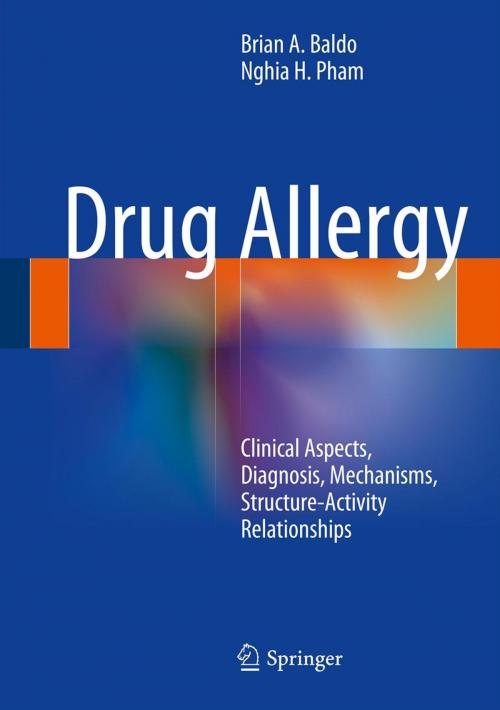Drug Allergy
Clinical Aspects, Diagnosis, Mechanisms, Structure-Activity Relationships
Nonfiction, Health & Well Being, Medical, Specialties, Pulmonary & Thoracic, Medical Science, Immunology| Author: | Brian A. Baldo, Nghia H. Pham | ISBN: | 9781461472612 |
| Publisher: | Springer New York | Publication: | July 2, 2013 |
| Imprint: | Springer | Language: | English |
| Author: | Brian A. Baldo, Nghia H. Pham |
| ISBN: | 9781461472612 |
| Publisher: | Springer New York |
| Publication: | July 2, 2013 |
| Imprint: | Springer |
| Language: | English |
The variety of chemically diverse pharmacological agents administered to patients is large and continues to expand and with every new drug released, there is always potential for adverse reactions, some of them allergic*.* With its roots in immunology and pharmacology, the science of drug allergy is becoming better understood and applied as its importance is increasingly recognized throughout the many branches of medicine. Drug Allergy: Clinical Aspects, Diagnosis, Mechanisms, Structure-Activity Relationships sheds new light on this field. Comprehensive in design, this authoritative title identifies the most important culprit drugs implicated in immediate and delayed drug hypersensitivities and offers up-to-date information on classifications, diagnoses, underlying mechanisms and structure-activity relationships. Chapters dealing with the molecular and cellular mechanisms of drug hypersensitivities, non-immune-mediated sensitivities and diagnostic methods are presented as introductory material for in-depth treatises on the β-lactam antibiotics, other antibiotics and antimicrobials, drugs used in anesthesia and surgery, opioid analgesics, corticosteroids, monoclonal antibodies and other biologics, drugs used in chemotherapy, proton pump inhibitors, iodinated and gadolinium-based contrast media and non-steroidal anti-inflammatory drugs. In addition to being of immense value to clinicians, other health care professionals and researchers, this title will prove invaluable for those taking undergraduate and graduate courses in science and will also serve as a useful text for students of medicine, pharmacy, nursing and dentistry.
The variety of chemically diverse pharmacological agents administered to patients is large and continues to expand and with every new drug released, there is always potential for adverse reactions, some of them allergic*.* With its roots in immunology and pharmacology, the science of drug allergy is becoming better understood and applied as its importance is increasingly recognized throughout the many branches of medicine. Drug Allergy: Clinical Aspects, Diagnosis, Mechanisms, Structure-Activity Relationships sheds new light on this field. Comprehensive in design, this authoritative title identifies the most important culprit drugs implicated in immediate and delayed drug hypersensitivities and offers up-to-date information on classifications, diagnoses, underlying mechanisms and structure-activity relationships. Chapters dealing with the molecular and cellular mechanisms of drug hypersensitivities, non-immune-mediated sensitivities and diagnostic methods are presented as introductory material for in-depth treatises on the β-lactam antibiotics, other antibiotics and antimicrobials, drugs used in anesthesia and surgery, opioid analgesics, corticosteroids, monoclonal antibodies and other biologics, drugs used in chemotherapy, proton pump inhibitors, iodinated and gadolinium-based contrast media and non-steroidal anti-inflammatory drugs. In addition to being of immense value to clinicians, other health care professionals and researchers, this title will prove invaluable for those taking undergraduate and graduate courses in science and will also serve as a useful text for students of medicine, pharmacy, nursing and dentistry.















